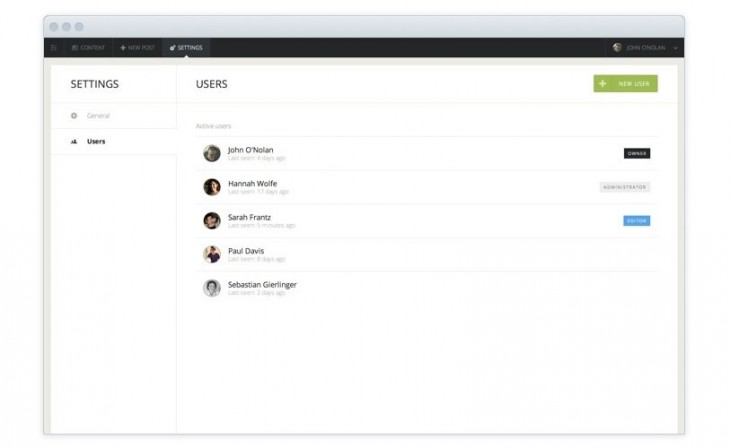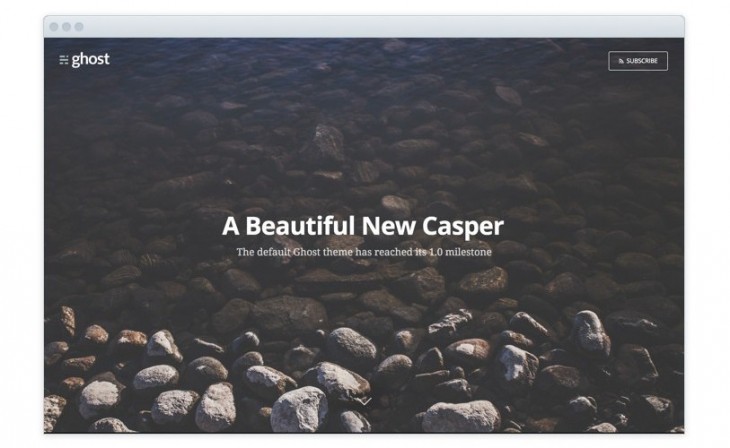
Ghost has updated its open-source blogging platform with a bevy of technical improvements that should help it to compete with established competitors such as WordPress, Tumblr and Medium.
Version 0.5 adds multi-user support, so blog owners can have multiple Ghost accounts writing and contributing simultaneously. Author, Editor and Administrator tiers can also be allocated for granular control.
In addition, Ghost now claims to be the “first and only open-source publishing platform” to offer a public JSON API. If those two acronyms mean nothing to you, here’s the lowdown: Similar to other mainstream technology platforms, third-party developers can now build desktop, mobile and Web apps on top of any Ghost-powered blog. Ghost says it’ll be publishing documentation for developers soon, before opening up authentication for the API via OAuth.
“Because Ghost is a self-consuming JSON API, every single feature which is in Ghost is available to third-party developers,” Ghost co-founder Hannah Wolfe said in a blog post. “Not just a subset; Everything.”
Delving deeper into the technical upgrades, Ghost has also converted the Ghost Web app to Ember.js. The behind-the-scenes shift means Ghost is now a client-side JavaScript application, which should give the company the ability to build a more powerful and intuitive user interface for its community.
To mark the release, Ghost has given its default Casper theme a hearty revamp with full-bleed homepage cover images, better typography, improved navigation and restructured navigation for readers. Alongside “hundreds of bug fixes,” Ghost has also rolled out OAuth support for secure authentication, a new install screen for when users set up a new Ghost blog, as well as support for Privacy.md – an open-source initiative that offers a plain text file with a description of every feature that could affect user privacy.
Ghost, which made its mark by raising roughly $330,000 on Kickstarter in May 2013, wants to set itself apart from the competition. To do so, the company has shifted to a 2-4 week release schedule. For comparison, most open-source projects ship two to three releases a year; but for developers and bloggers, Ghost says this approach just wasn’t going to work.
“This model [was] good for precisely nobody,” Wolfe added. “Developers have to wait 3-6 months to see how users respond to their work, and then iterate on it another 3-6 months after that. For users who have to upgrade, the release cycle [was] always either too long or too short. Both are understandably frustrating.”
The latest versions will be rolled out automatically to users of its premium Ghost(Pro) service, which also offers a hosting service. Anyone hosting their own Ghost-powered blog can update at any time, although the company will send out notices roughly four times a year to remind users.
Image Credit: Shutterstock
Get the TNW newsletter
Get the most important tech news in your inbox each week.







